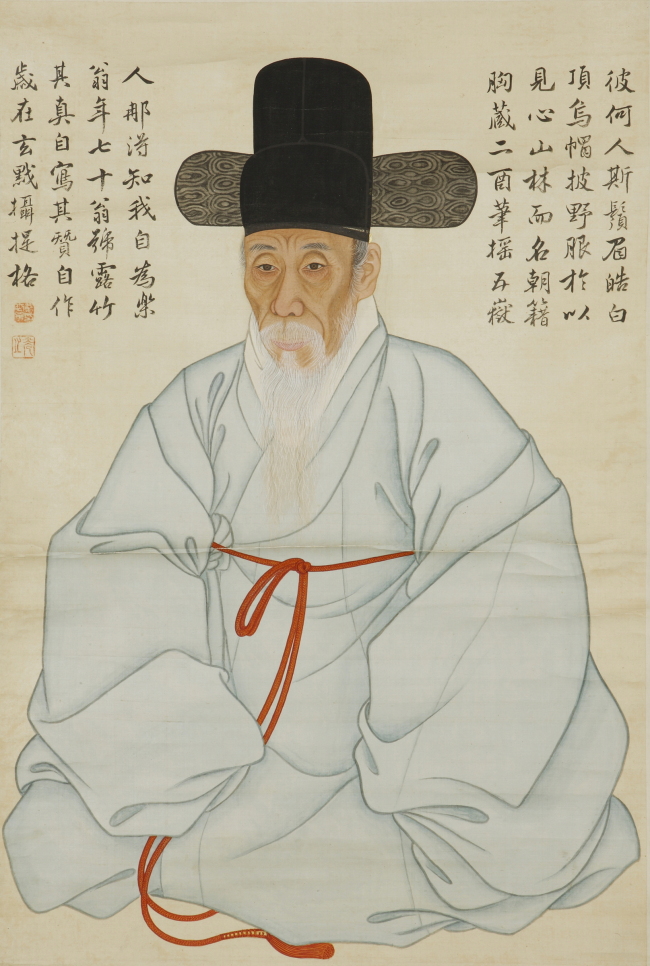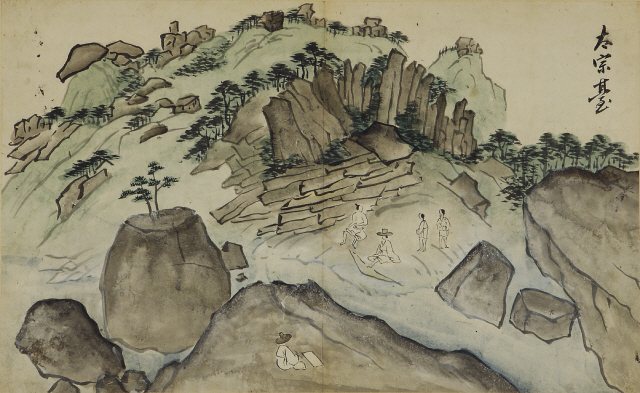The 18th century was a crucial moment for the people of the Joseon era (1392-1910).
Cities started to form, trade was active and Western knowledge was introduced to the country by those who traveled to China, opening the eyes of the intellectuals who believed the traditional Confucianist way of life was the only one of merit.
Kang Se-hwang (1713-1791) was a painter, calligrapher, poet and critic who captured the dynamic sceneries of the time. Drawing since the age of 10 and painting until his death, Kang observed and left behind some remarkable records of momentous scenes of his time: a trip to Songdo, which is currently Gaeseong in North Korea; a journey to China to pay respects to the Qing emperor on his birthday; and a visit to Mount Geumgangsan, among others. An exhibition highlighting Kang’s art is on display at the National Museum until Aug. 25 at the special exhibition hall.

“Self portrait.” (National Museum of Korea)
“A traveler’s journal is better than poetry but a painting is far better than a journal. Landscape paintings can help people who haven’t been to the spot feel as if they were there,” Kang once commented.
And the painter never stopped traveling. At 75, he visited Mount Geumgangsan, which was one of the most popular holiday destinations at that time, and left a detailed picture of the location. He also visited Gaeseong and created “Songdogihaengcheop (Journey to Gaeseong),” composed of 16 paintings and three articles. He adopted perspective and shading, both Western techniques, in his paintings.
“Kang was a very detail-oriented artist. People say the places he described still have those details and he actively used new and Western techniques to better his works,” said Min Kil-hong, a curator at the museum.
Kang was also one of the pioneers who specialized in all four elements of the sagunja, or the “four gracious plants” ― plum, orchid, chrysanthemum and bamboo.
“Drawing sagunja was one of the virtues of being a nobleman. While many people specialized in just one of the four, Kang mastered all of them. Kang thought that a painter should not be afraid of taking on new objects and his risk taking always paid off,” Min said.

“Taejongdae,” one of 16 paintings from “Songdogihaengcheop (Journey to Gaeseong)” (National Museum of Korea)
Kang was born into a yangban family, a noble family, but when he reached the eligible age to sit for the civil service exam, his older brother became involved in a fraud scandal and the entire family was stripped of the opportunity to seek government office.
He stayed at his father-in-law’s house in Ansan, Gyeonggi Province, and made friends with the local intellectuals until he was called into service at the palace at the age of 61 in recognition of his outstanding talent.
Among the exhibited items are the royal letter notifying Kang of his employment as a public official and a letter which refers to his family’s admittance to a special club of families who have produced generations of high-ranking officials.
“But it seems that Kang wasn’t always pleased with life in the public eye. In his self-portrait he drew himself with a hat worn by public servants but wearing layman’s attire, which was regarded as inappropriate. He was always conflicted by his dual status,” Min said.
Kang focused on nurturing young artists. Among his proteges is Kim Hong-do (1745-1806), later hailed as the master of folk painting. Kang loved his pupil so much that he even wrote critiques for Kim’s works.
Of one of Kim’s paintings of a butterfly he said, “I can almost feel the powder falling from the butterfly’s wings. How can an artificial thing resemble so much of the natural model?”
Kang also collaborated with the younger generation in creating artwork. “Elegant Gathering at Gyunwa” was created by four artists ― Shim Sa-jeong, Kim Hong-do, Choi Buk and Kang himself, who were all famous painters of the time.
“Each of Kang’s works is different in style but equally valuable and amazing. He never stopped being curious and loved trying new things, which left us tons of works to study even to this day,” Min said.
The exhibition commemorating the 300th anniversary of Kang’s birth is being held until Aug. 25. The museum is closed on Mondays and “Conversation with the Curator” is held at 6:30 p.m. and 7:30 p.m. on Wednesdays.
By Bae Ji-sook (baejisook@heraldcorp.com)







